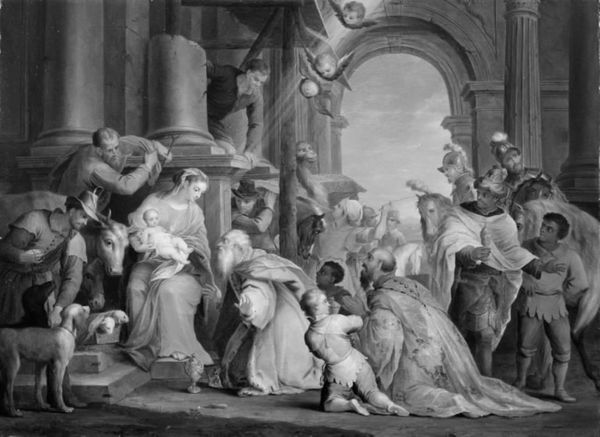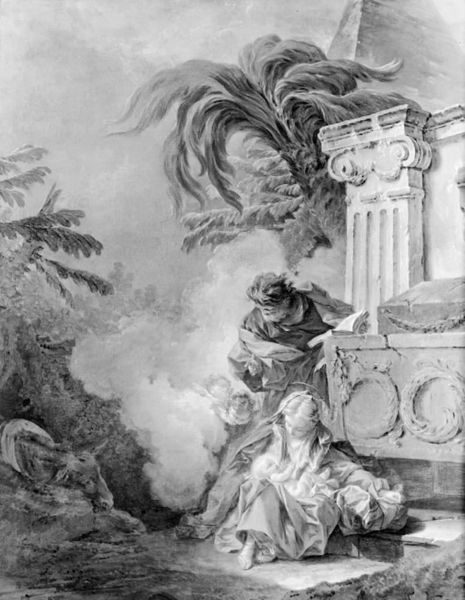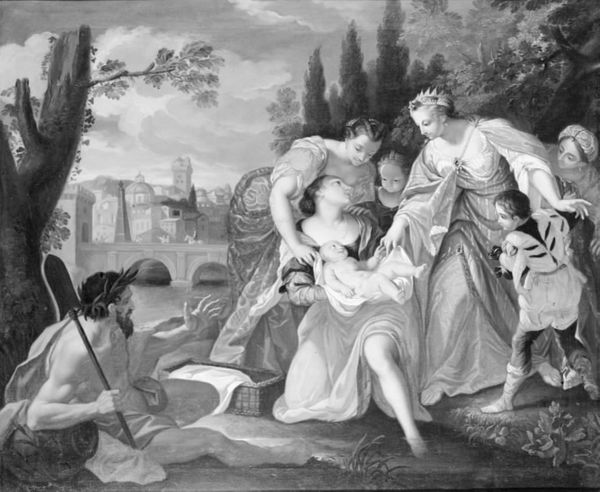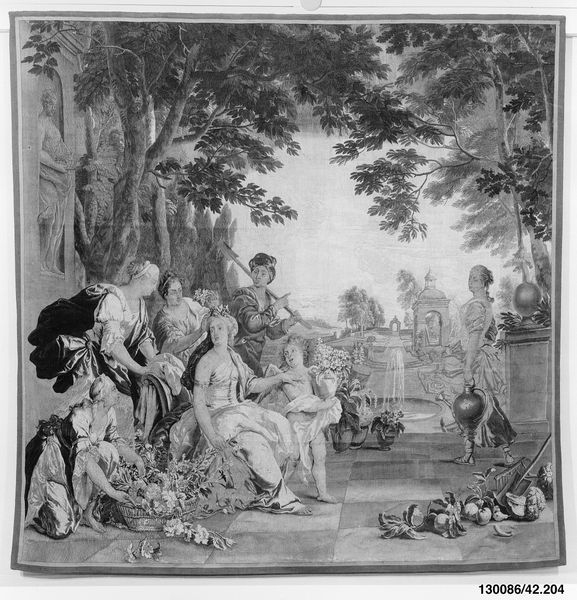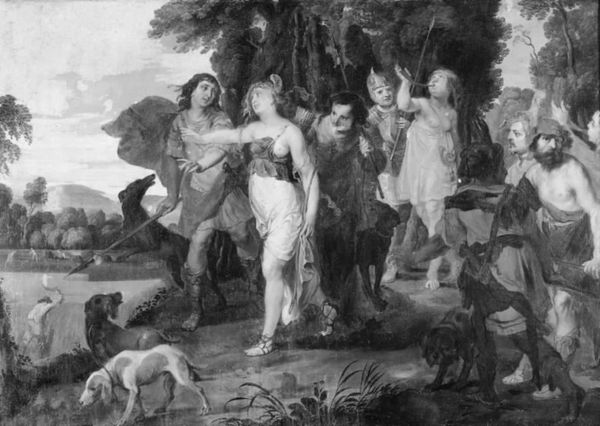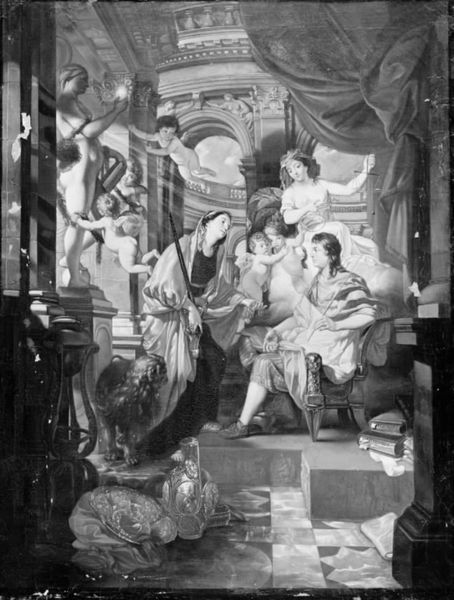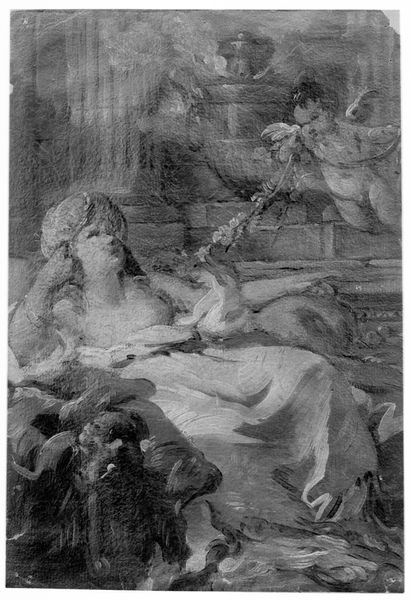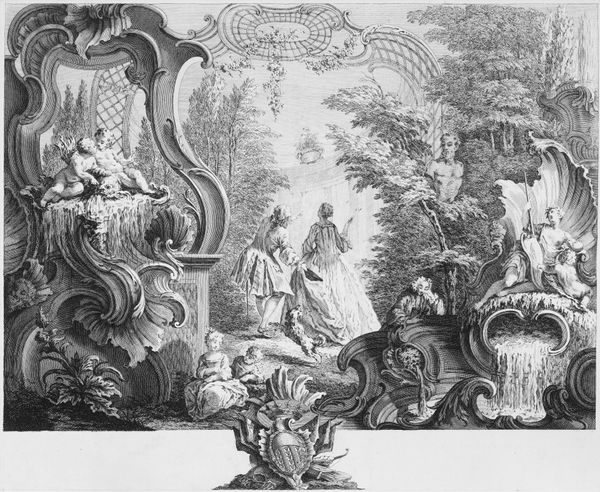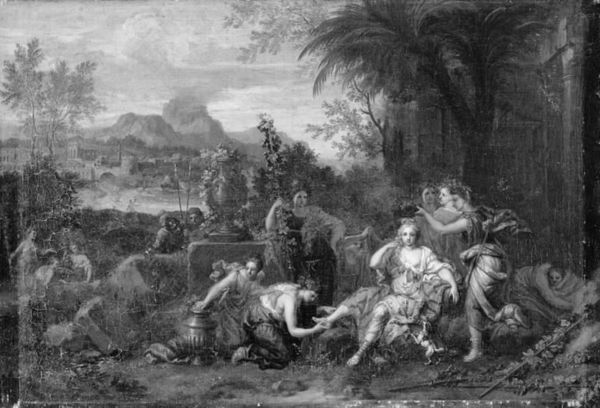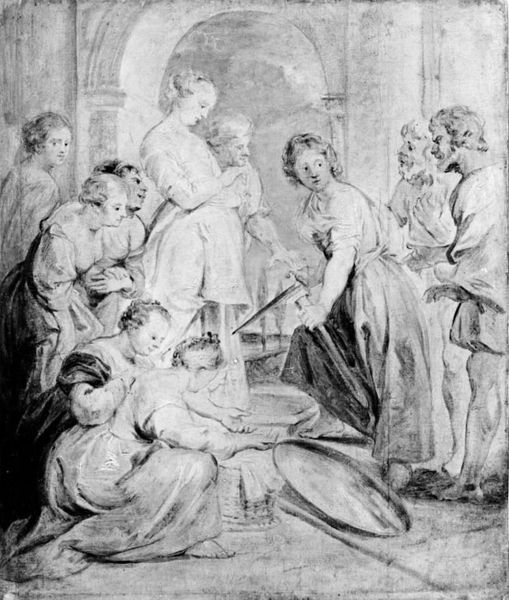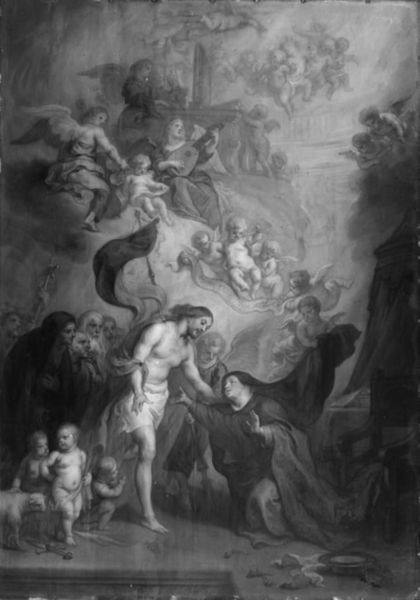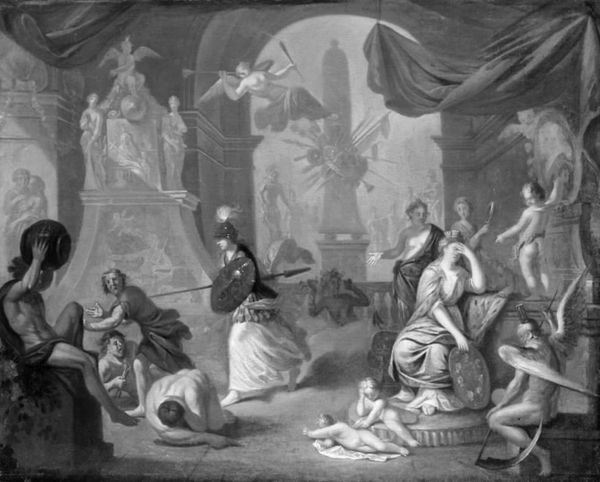
drawing, wood, charcoal
#
drawing
#
allegory
#
pencil sketch
#
landscape
#
charcoal drawing
#
figuration
#
pencil drawing
#
wood
#
genre-painting
#
charcoal
#
history-painting
#
academic-art
#
charcoal
Dimensions: 190 mm (height) x 157 mm (width) (netto)
Curator: Richard van Orley's "Bacchantic Sacrifice," created between 1678 and 1732, presents a fascinating study in charcoal, pencil, and wood. What is your initial reaction to this dramatic scene? Editor: Visually, it overwhelms—a frenetic energy, like a dance veering into chaos. The chiaroscuro heightens the drama, the blacks so deep it feels like secrets are lurking. Curator: The artist masterfully utilizes charcoal to establish tone, building a composition based on strong diagonals that move the eye through the complex figuration. The precision of the lines juxtaposed with looser applications of the charcoal creates dynamic movement. Editor: This isn't just about compositional skill; the piece implicates ritualized violence, performed predominantly by women. Consider the Bacchantes themselves, devotees whose ecstatic rites blurred the boundaries between liberation and transgression. Are we invited to celebrate their autonomy or cautioned about female hysteria? Curator: While those questions are crucial for your interpretations, observing the application of charcoal on wood offers insight to the artist's intentions and execution. Notice how the textures rendered lend weight to forms and shape narrative clarity within this turbulent space. Editor: Absolutely. Yet, considering Orley's historical context – deeply patriarchal – these textures communicate cultural anxieties regarding female agency and communal unrestrained revelry. The classical architecture surrounding the revelers hints at the collapse of rational structures under the weight of primal instinct. Curator: You’ve offered a compelling reading there! Returning to form, it seems impossible not to consider this piece’s place within art academies in the 17th and 18th centuries. Van Orley likely composed it as a model for his pupils and potential patrons alike. Editor: Indeed, it’s a palimpsest, a layering of artistic styles reflecting the tension between personal expression and social conformity of the time. Examining art history reveals the complex politics of the past. Curator: The study of the past should bring about more curiosity of today's visual languages. It makes one wonder where current political and societal norms will leave us centuries from now. Editor: A haunting premonition to consider! Thank you for sharing your insights on Orley's piece; art serves as both a reflection and premonition of history.
Comments
No comments
Be the first to comment and join the conversation on the ultimate creative platform.
